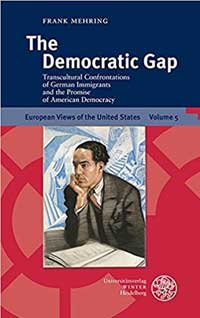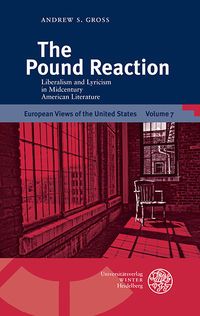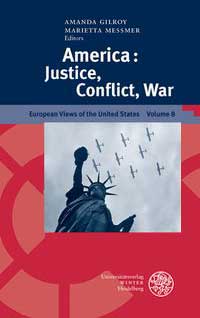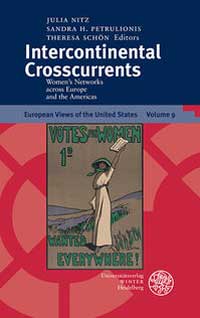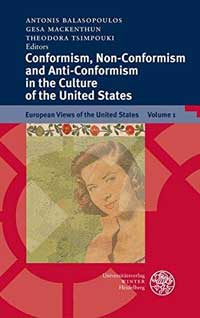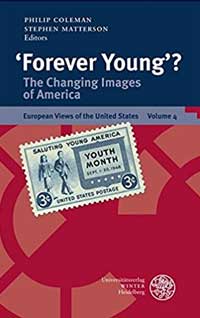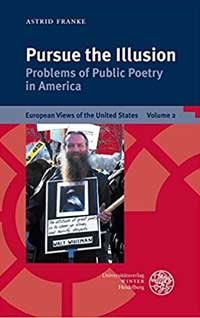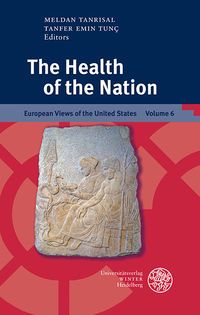Roy Goldblatt, Jopi Nyman and John A. Stotesbury. Close Encounters of an Other Kind: New Perspectives on Race, Ethnicity and American Studies
Roy Goldblatt, Jopi Nyman and John A. Stotesbury. Close Encounters of an Other Kind: New Perspectives on Race, Ethnicity and American Studies. Joensuu: University of Joensuu, 2005. Pp. xv, 278.
Close Encounters of an Other Kind provides the scholars of the field with an opportunity to have access to a real "trans-national" array of articles on race and ethnicity as negotiated in North American literature, culture and history (by North America is meant the broad locale including Canada, the US and the Caribbean). This volume is a compilation of twenty-four essays - helpfully articulated around four axes or sections - and a brief "Afterword", penned by Amritjit Singh which closes the book. A common pitfall in ambitious projects (both in scope and length) such as this tends to be the disparate nature of contributions, with the logical corollary that not every one of them manages to keep the desired standards of rigorous, original and high-quality scholarly work. However, in this particular case it has to be acknowledged that most essays in the collection prove to be innovative and offer us insightful readings of American literature and/or history. And yet, there remain a few articles that fail to achieve the necessary depth of analysis - admittedly, on the whole, due to their insufficient length. All in all, the volume remains a valuable contribution to the field of ethnic and American studies, an ever-evolving area of studies that like multiculaturalism, as Amritjit Singh contends, "is here to stay".
Part I of the book, devoted to Asian America literature, opens with Silvia Schultermandl's ""What am I, anyhow?" Ethnic Consciousness, Matrilineage and the Borderlands-Within in Maxine Hong Kingston's and Rebecca Walker's Autobiographies". The author takes up the by-now familiar concept of in-betweenness as constructed by "hyphenated" American authors. She also dwells in the recurrent mother-daughter relationships that inhabit - and usually haunt - most women autobiographies. What is altogether new is her step-by-step comparison of the now-classic The Woman Warrior, by Kingston, with the more recent autobiography by Alice Walker's daughter, Black White and Jewish: Autobiography of a Shifting Self (2001). Schultermandl concludes that the narrators in both autobiographies eventually opt to "map" their identities "along political rather than ethnic parameters," that is, they end up giving preference to active personal choice over passive (biological) inheritance.
Noelle Brada-Williams's insightful essay examines the work of two young Asian American writers, Chang-rae Lee and Gish Jen. Brada-Williams chooses Lee's Native Speaker and Jen's "Birthmates" as test cases for Claire Jean Kim's depiction of Asian American racial structure. The article presents the reader with an in-depth analysis of the interethnic relationships that the protagonists in both texts either attempt to forge or are circumstantially burdened with. Brada-Williams describes how the "old syntax" of black vs white, together with the "old narratives" of anti-immigrant chauvinism, shape most contemporary attitudes and points out the pessimistic stance both texts share: "The outlook on changing received paradigms for Asian Americans is pessimistic in both Lee's and Jen's works. In both works the protagonists['] children, their very hopes for the future, do not survive."
In "Beyond Black and White: Striving for Visibility in Tripmaster Monkey by Maxine Hong Kingston and Native Speaker by Chang-rae Lee", Klara Szmanko complements Brada-Williams's study. Szmanko digs into these two Asian American novels in order to pull out their common thread of interracial power dynamics. The author argues that both Tripmaster Monkey and Native Speaker foreground the similarities and contrasts between Asian Americans and African Americans, and, on most occasions, the black-white dynamics erase any other "color". The main character in Kingston's novel, for instance, stands for Asian American cultural nationalism and its admiration for African American's social visibility and cultural distinctiveness. Lee's novel goes further and openly accuses mainstream America of pitting African Americans and Korean Americans against each other. Szmanko comes to the conclusion that "[w]hites are not only responsible for the invisibility of various minorities in American society, but also for their invisibility to each other".
Serena Fusco's essay attempts to move, as its title predicts, "Beyond Minority Discourse" in its interpretation of an Asian/American novel, Nieh Hualing's Mulberry and Peach. After pointing out the increasingly conspicuous "diasporic shift" in Asian American studies, Fusco eloquently reads "Mulberry/Peach's subjectivity", that is, the protagonist's split personality, "as a site of struggle among multiple power discourses": Chinese (gendered) nationalism and sinocentrism, US assimilationism and (gendered) imperialism. Thus, Mulberry and Peach is interpreted not only as an allegory of contemporary China's exilic identity (the sinocentric approach), but also as a variation on the "assimilationist paradigm" (the US-centered reading). Ultimately, Fusco maintains, the novel "casts immigration and diaspora - elsewhere read as conflicting paradigms - as fundamentally interconnected."
Jenni Valjento's essay again chooses to address the issue of interracial/interethnic relationships. "Uneasy Matches: Contacts between an Indian Immigrant Woman and White Americans in Bharati Mukherjee's Wife" tries to move away from culturalist or "ethnicist" tenets and focuses instead on the interconnected factors of "class-, gender- and historically-specific social locations" that shape Dimple Dasgupta, the immigrant protagonist of Mukherjee's novel. It is in her negotiations with "white" Americans, that Dimple becomes aware of the new gendered and class hierarchies in the US society. The very cause of the protagonist's eventual emotional breakdown, according to Valjento, lies in her failure to either preserve the old identity-markers or adopt the new Western paradigms.
The last contributions to this section expand the corpus in order to include Canadian texts, but they both fail to provide an in-depth analysis of the chosen corpus. Joel Kuortti's essay focuses on two books about "diasporic" Punjabi Sikhs, one partially set in Canada and another one in the US: Shauna Singh Baldwin's English Lessons and Other Stories and Robbie Clipper Sethi's The Bride Wore Red, respectively. Kuortti sets out to tackle three issues: the role of women in South Asian diasporic writings, the way these texts problematize the construct of "nation", and, last but not least, how the sites of (colonial) power - Canada in Baldwin's collection and the US in Sethi's novel - are shaped by these diasporic subjects to the same extent that the immigrants themselves have to change, adapt, and adjust to the new environment. Mary Economou Bailey's deals exclusively with Canadian literature and addresses the issue of double emplacement. She briefly analyzes the major works of four "multicultural" writers where fiction and history, the personal and political are intertwined. Economou pays special attention to the way these writers delineate characters "caught between two words, the "here" and the "there"," characters "whose pasts merge with the present". While Kuortti's essay provides useful information about the status of South Asians in North America and briefly outlines the most significant scenes in Baldwin's collection and Sethi's novel, it fails to delve deeper into the issues it originally intended to cover. Similarly, Economou's essay proves highly readable, but attempts to analyze far too many texts and thereby does not progress beyond a cursory description of each.
Part II of this volume offers "African American Perspectives" on the issues of race and ethnicity. The opening chapter, by Fredrik Sunnemark, broadens the scope of the book beyond literary criticism in order to incorporate an aspect of cultural studies, specifically Martin Luther King's rhetoric. Although the essay offers no formal conclusion, the aim of the author is clearly stated at the beginning: Sunnemark intends to reveal the ways in which "King's rhetoric works inside a hegemonic understanding of race", while "at the same time … go[ing] beyond and challeng[ing] this understanding". Sunnemark convincingly shows the contradictions inherent in King's discourse. He argues that King initially worked within the "ethnicity paradigm" (where race is subsumed within ethnicity, it is just "one of several ethnic denominators"), a paradigm which aimed at eventual assimilation. However, King also upheld some of the theoretical tenets of the very system he was arguing against. The leader implicitly assumed the "biological paradigm" underlying the racist segregation in the South, in that he emphasized the difference inherent in the position of black people in America and thus "challenge[d] the ethnicity paradigm from within".
Minna Niemi's "Challenging Psychoanalysis: A Black Woman's Experience of Race, Class and Gender in Alice Walker's Meridian" goes back to the field of literary studies. Niemi specifically explores "the ways in which Walker has represented her protagonist's physical disorders and psychic fragmentation". Her psychoanalytic approach to Walker's novel intends to be more inclusive than traditional psychoanalysis, since it includes the neglected ingredients in the psychoanalytic "recipe", namely, the interactions of race, class and gender. Thus, for Niemi Meridian highlights the constructedness of whiteness, a reflection "that often still remains invisible in psychoanalytical theories." The following essay, by Hanna Reinikainen, perfectly dovetails with Niemi's, in that both deal with the physical and psychological disorders suffered by black female characters, whereas this time we are presented with a more "body-centered" perspective. In "Embodiment of Trauma: Corporeality in Toni Morrison's Beloved" Reinikainen focuses on the centrality of the body in the construction of blackness and investigates the black maternal body in Morrison's novel. In addition, the author interestingly applies the concept of the mirror stage (originally Lacan's, not Kristeva's, as implied in the essay) to the relationship between Sethe and Beloved, and argues for Sethe's need to view her body as a healing repository of memory, rather than as a maternal anchor.
Anne Urbanowski's "Swimming against the Tide" does indeed offer quite a fresh approach to contemporary African Americans, by focusing on the social diversity and dissension within this group. Class, modulated by income, education and skin-color, seems to open ever-increasing gaps within the black community. However, according to the author, this difference fails to be foregrounded in cultural and social studies of African Americans, as well as in popular perceptions, which leads to a certain bitterness, especially visible among middle-class and affluent members of the community: "What is most resented is the fact that the diversity of experiences, opinions, and values within the black community is constantly being denied because of the media obsession with the underclass."
Also engaging in the discursive field of social and cultural studies, Sara Kärkkäinen Terian's "Alienation and Home Design: Images of Desired Environments in an African American Community" tries to ascertain whether one's "race" determines one's choice of living environment. Kärkkäinen creatively combines the Marxist concepts of alienation and "false consciousness", with Maslow's "hierarchy of needs" and what Thomas and Thomas term the "definition of the situation", which involves considering real anything we perceive as such. With these theoretical tools in mind and with the methodological choice of selective interviews and participant observation, the author examines the attitudes of the African American inhabitants in a given city. Kärkkäinen's findings confirm that it is "an inauthentic definition of the environmental situation", prompted by economic deprivation, even if perceived as an ineffaceable given by most dwellers, that ultimately keeps them "from reaching or even aspiring to the fulfillment [sic] of their higher needs", in this case aesthetic preferences in their living environment. Although the final choice of environment could possibly be influenced by "African American culture" - a controversial notion itself -, "class", not "race", seems to be the most decisive factor.
The article that closes this section, written by Marja-Leena Hakkarainen, surprisingly goes beyond the basic North American perimeter that circumscribes the contributions to the volume. However, although essay focuses on "Afro-German" literature, the author finds (African) American echoes in the work of the best-known "afro-deutscher" writer, May Ayim. For Hakkarainen Ayim's poems and other black German texts (mostly autobiographical) "negotiate hyphenated identities" and thus challenge binary racial dichotomies, while at the same time "remap[ping] the colonial heritage" and facilitating "transnational alliances".
The following cluster of articles, collected under the heading "Emerging Ethnicities", comprises Arab Americans, Hispanics and Jewish Americans. Salah Oueslati's socio-historical study reads the plight of Arab Americans as that of the "invisible minority". According to the author, such invisibility is partially accounted for if we pay attention to the ambiguous - even contradictory - "racial status" of Arabs throughout US history. Moreover, as Oueslati rightly points out, Arab Americans were "often racialized according to religion (Islam) rather than biology", although, paradoxically, there are still more Christians than Muslims within the Arab American community. Other differences (national origin, social extraction, etc.) have likewise been erased in media portrayals of Arab Americans. Last, but not least, the author emphasizes that Arab Americans' political stance vis-à-vis US interests in the Middle East has further compromised their position in recent times. However, after the attacks of September 11, 2001 (if not before), one is led to believe that Arab Americans no longer constitute the "invisible minority" that Oueslati contends they still are.
Marc Priewe's ""Make a Run for the Border": Chicano Performance Art and the Search for a Space of/for Difference" and Sophia Emmanouilidou's "Border-Crossings and the Subject in Abeyance in Irene Beltran Hernandez's Across the Great River" both deal with Chicano literature in the US. Priewe chooses to study Chicano performance art because of its long-standing tradition in this community: "performance and theater have played an important role in counteracting cultural demands to acculturate to colonial society". In his insightful review of Guillermo Gómez-Peña's performance art, Priewe describes it as fronterizo and hybrid. He also initiates an interesting discussion as to whether these "border performances" run the risk of being co-opted and neutralized by the (neo)colonial establishment. Priewe concludes that, while Gómez-Peña's performances share the clear oppositional stance of the traditional Mexican-American (and later Chicano) corridos, they also go beyond: his performances "remain connected with the resistance tradition of the corrido by employing the border as a trope for transit and change", while at the same time pointing at the limitations of the border paradigm. Emmanouilidou's essay similarly tackles the issue of borders and border-crossing. This time, however, the author analyzes Beltran Hernandez's Across the Great River, from the standpoint of the "semiotics of culture". More specifically, Emmanouilidou engages in a cogent debate "of cultural identity vis-à-vis territoriality" and next applies these concepts to her analysis of the novel, with special attention to the protagonist, a little Mexican girl who has crossed the border. The child is read here as a privileged "border trope of a mutating identity", who is not only shaped by the new (US) environment, but also becomes instrumental in shaping that new location.
The last two articles in this section are Kaisa Ilmonen's "Creolizing the Queer: Close Encounters of Race and Sexuality in the Novels of Michele Cliff" and Cheryl Alexander Malcolm's "The Show's Not Over until the Schlemiel Sings: When Jewish Comedy Meets Puccini". Ilmonen's essay explores how race, gender and sexual orientation remain mutually interlocked, as shown in the work of Caribbean writer Michele Cliff. Ilmonen contends that, in "rewriting the history of resistance and the colonized traditions of the Caribbean", Cliff concomitantly shows "how sexualities and genders may also be rewritten". Thus, suppressed homosexuality - "the greatest taboo" in the Caribbean context - can finally be brought to the surface. In the last contribution to Part III we move (but only partially) from queer theory to interethnic comparative studies. In "The Show's Not Over until the Schlemiel Sings", Cheryl Alexander Malcolm briefly discusses the presence of "Jewish American humor" in David Henry Hwang's M Butterfly. Malcolm convincingly argues that the Asian American playwright consciously "cross-pollinates" with the Jewish tradition of the Schlemiel figure. In this light, Gallimard becomes the Schlemiel in the play, both as the butt of emasculating jokes and as the epitome of foolishness, "the patron saint of the socially inept".
The first essays in Part IV ("Conflicts of Whiteness") look back to the early stages in US history and linger on the negotiations of gender and race during colonial times. Felicia Smith-Kleiner's "Gendered Transactions in the Conquest and Settlement of America" chooses to contrast the attitudes of the first British (Puritan) settlers and the Spanish (Catholic) conquistadores as regards Native women: elimination and appropriation, respectively. Whereas the Anglo settlers were mostly families who abhorred any physical contact with the Natives, the Spanish contingent was made up mostly by men with no "qualms" about "mixing" with "Indias", which resulted in a higher percentage of "mestizaje". However, after an interesting examination of the legal changes regarding "sex crimes" (fornication and adultery) in both Massachussets and New Spain, Smith-Kleiner manages to prove that, by the late 18th century, both colonies had ruled (directly or indirectly) against "miscegenation" and had paved the way for the mystification of the white woman's "racial/sexual purity". In his short - and at times slipshod - article, Christopher Cairney addresses this same concern as conveyed in American "captivity narratives". Cairney takes up Mary Douglas's anthropological theory in Purity and Danger and argues that captivity narratives ultimately - exemplified here by Mary Rowlandson's - exhibit the settlers' "Need for Strangeness": while these texts apparently intend to "present ethnic stereotypes of the natives", they end up "reinforcing certain stereotypes of the Europeans themselves," in this case the pressing need for the "impure" other.
In "Challenging Authority through Transnational Forms of Rebellion: Structural Mutinies in Melville", Stephen F. Wolfe chooses to explore the works of a classic. Although the initial focus lies in Herman Melville's Billy Budd, Sailor, reference is also made to the other "mutiny narratives" in his literary career: White Jacket, Bartleby the Scrivener and Benito Cereno. Wolfe's article abounds in interesting historical details about mutinies in the 18th and 19th centuries, but, more importantly, it offers a reading of Melville's mutinies as both reflections and interrogations of the social, political and economic changes of the period. Narrative control becomes, for Wolfe, key in the interpretation of these mutiny scenes, in that both hesitations and elisions provide powerful commentaries on the new social order.
The construction - and deconstruction - of whiteness becomes more central in the following essays. Thus, Lotta Kähkönen's "Noble White Ethnicity: Joyce Carol Oates's Expensive People as a Parody of the American Family Romance" explores the ways in "whiteness intersects with class and gender" in Oates's novel, as well as the repercussions of a given choice of "white ethnicity". The article focuses on the characterization of Natashya Romanov Everett, the "mother" in Expensive People. Kähkönen describes how, through its depiction of Natashya, the novel provides both a "parody of the Freudian family romance" - complete with a reversal of the Oedipus complex - and a commentary on the history of (white) immigration in the US, specifically through the cultural construct that the author terms the "Fantasy of Noble Origins".
In the following article Sara Eeva offers a perceptive analysis of Creole female characters in Jean Rhys's Wide Sargasso Sea and Voyage in the Dark as "Others within whiteness". The author maintains that Creole women in these novels do not entirely "belong" in the restrictive construct of whiteness. Their racial status remains highly mutable, slippery and ambiguous, which confirms the belief that "racial categories and hierarchies are not natural but need constant reconstruction". Both in the Caribbean context and in the metropolis, white Creole women can "pass" for white on certain occasions, but they are constantly represented as "almost the same, but not white" (Bhabha's echo in Eeva's text), that is, they "are constructed as abjects" and Others to the "real" white ladies.
In the last essay of the collection, Stefano Luconi also addresses the issue of the construction of whiteness, in this case the "racialization" of Italian Americans as white. Through a review of the historical stages of "whitening" that the members of this community went through, Luconi claims that Italian Americans' campanilismo (localist or regionalist sentiment) initially hindered the emergence of a sense of "Italianness" among the immigrants, but, in the long run, this did not prevent Americans from perceiving them as a "cohesive group". The need to collectively defend themselves from "white" discrimination and the growth of the (US-born) second generation ultimately provided the necessary cohesion for the Italian American community. The suspicions of disloyalty prompted by World War II only contributed to this sense of "separateness" as an ethnic group and further delayed the acceptance of Italian Americans as white. The "spread of racial consciousness" (as white) and the concomitant "anti-black" sentiment would not surface among them until the difficult coexistence of African Americans and Italian Americans (most notably in large, industrial cities such as Detroit) resulted in overt conflict during the 40's riots. Despite the misleading 2000 census data, Lucano predicts that Italian Americans will continue to favor this racial identification as white over the ethnic label connected with their national ancestry.
Begoña Simal González
Universidade da Coruña, Spain


